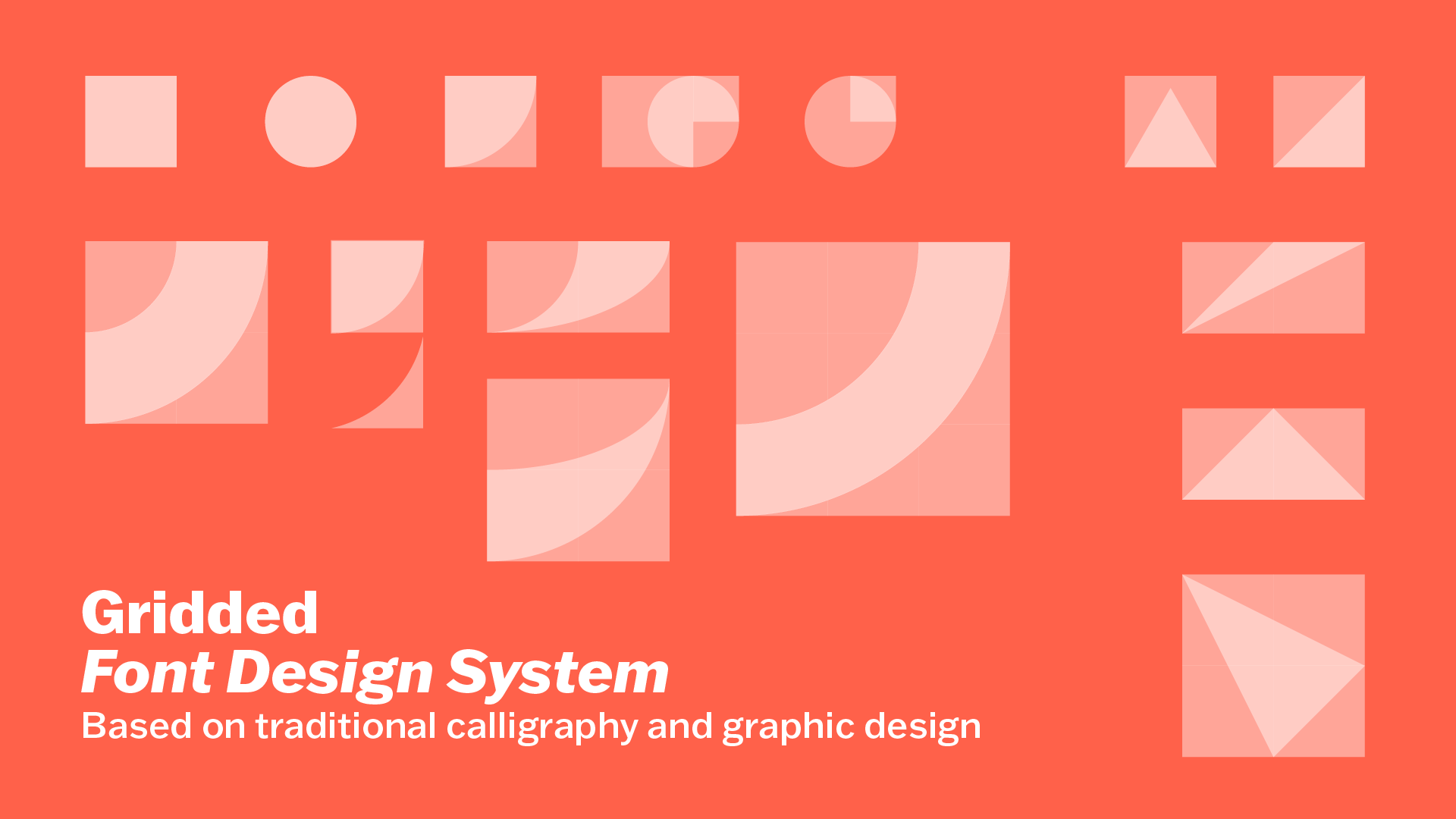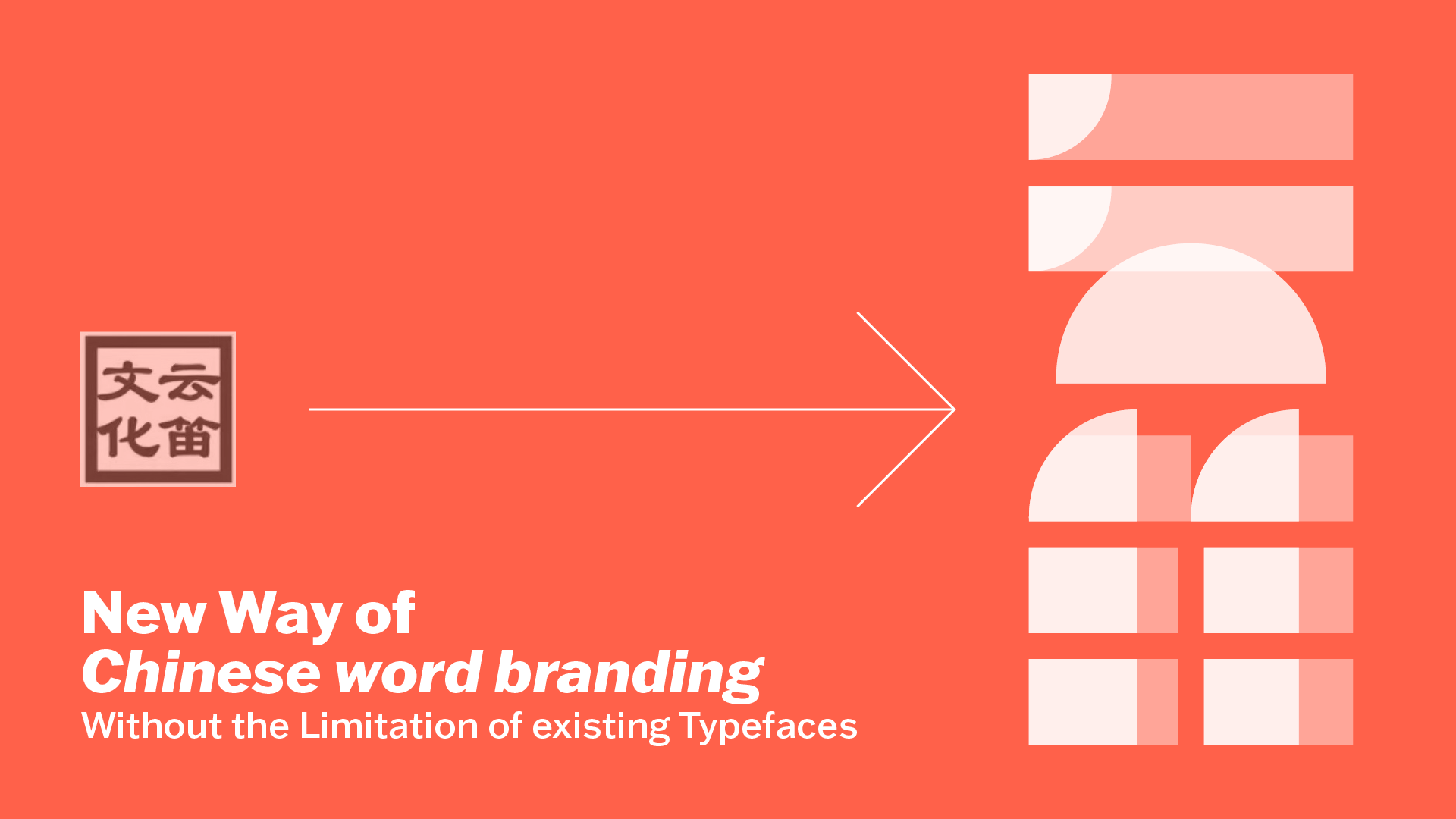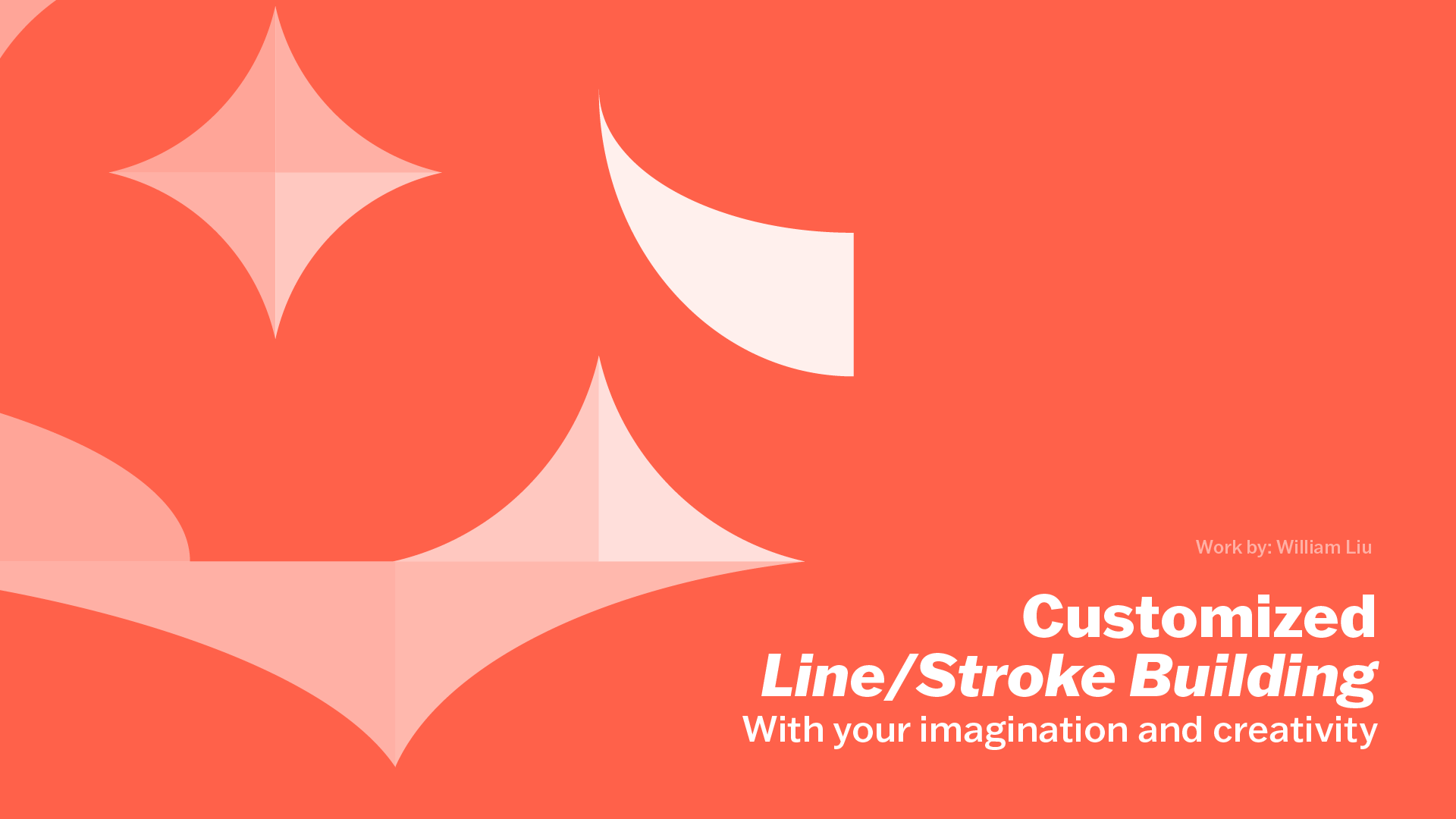Design Chinese
2021.10-2022.10
Experimentation on Chinese Calligrpahy making
2021.10-2022.10
Experimentation on Chinese Calligrpahy making
This project is a multi-component design focusing on the creation of Chinese characters and calligraphy. By "design Chinese'" it means to design, rather than to type of copy the Chinese letters; and also, to treat the design in the Calligraphic way.
The long-term project actually came from a smaller scale redesign practice. We choose a "good design" and then redesign it. I chose the "possibilities of design" by Another Design studio. When redesign it the interactive part (that the design outcomes actually came from the audience) intrigued me, and I thought, ""Isn't it possible to apply it on something harder, for example language?”
The long-term project actually came from a smaller scale redesign practice. We choose a "good design" and then redesign it. I chose the "possibilities of design" by Another Design studio. When redesign it the interactive part (that the design outcomes actually came from the audience) intrigued me, and I thought, ""Isn't it possible to apply it on something harder, for example language?”
The “Possibilities of design”, I started with:
![]()

Traditional Chinese writing is hard. To make “design” easier I started from the simplest geometrics. See how it works.
What I did with my name: I wrote it countless times in the past, but I never had the luxury of manipulating its details. This time while maintaining its original shape, I tried to play with these.
![]()
What I did with my name: I wrote it countless times in the past, but I never had the luxury of manipulating its details. This time while maintaining its original shape, I tried to play with these.

The grid expanded:
![]()
Now with the grid I wonder what others may do with this:
So I made a “questionnaire”: This is a sample I gave to my teacher Anthony. See how he did this:
The “prompt”(with his name):
![]()
The “outcome”:
![]()
What others are doing:
Quite some unexpected efforts from the testers:
![]()
![]()
Further Step:
For the next stage of this project, I want to brand the previous experiment. To make it real, and make it known.
![]()
The platform, a kiosk, and promotion
I think a website platform could be a good way to design, and to communicate with each other. The "Design Chinese" web would have both the workspace for people to create/save their visuals and the community to share each other's work.
![]()
![]()
![]()
![]()
Also besides handing out e-questionnaire sheets, I also designed a kiosk user experience to create passerby's names.
![]()
![]()
Some promotion posters:
![]()
![]()
![]()
![]()

Now with the grid I wonder what others may do with this:
So I made a “questionnaire”: This is a sample I gave to my teacher Anthony. See how he did this:
The “prompt”(with his name):

The “outcome”:
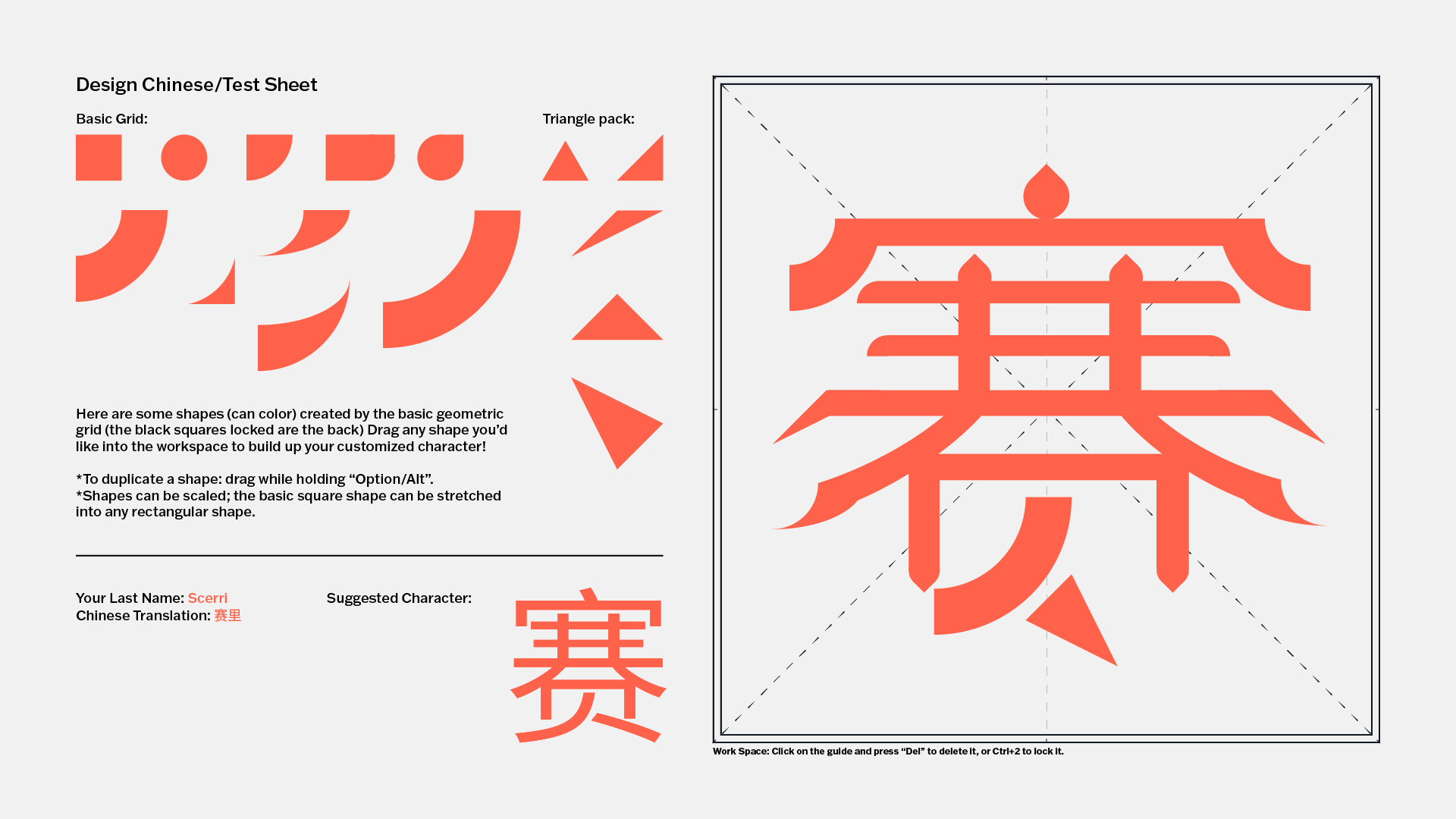
What others are doing:
Quite some unexpected efforts from the testers:


Further Step:
For the next stage of this project, I want to brand the previous experiment. To make it real, and make it known.

The platform, a kiosk, and promotion
I think a website platform could be a good way to design, and to communicate with each other. The "Design Chinese" web would have both the workspace for people to create/save their visuals and the community to share each other's work.




Also besides handing out e-questionnaire sheets, I also designed a kiosk user experience to create passerby's names.

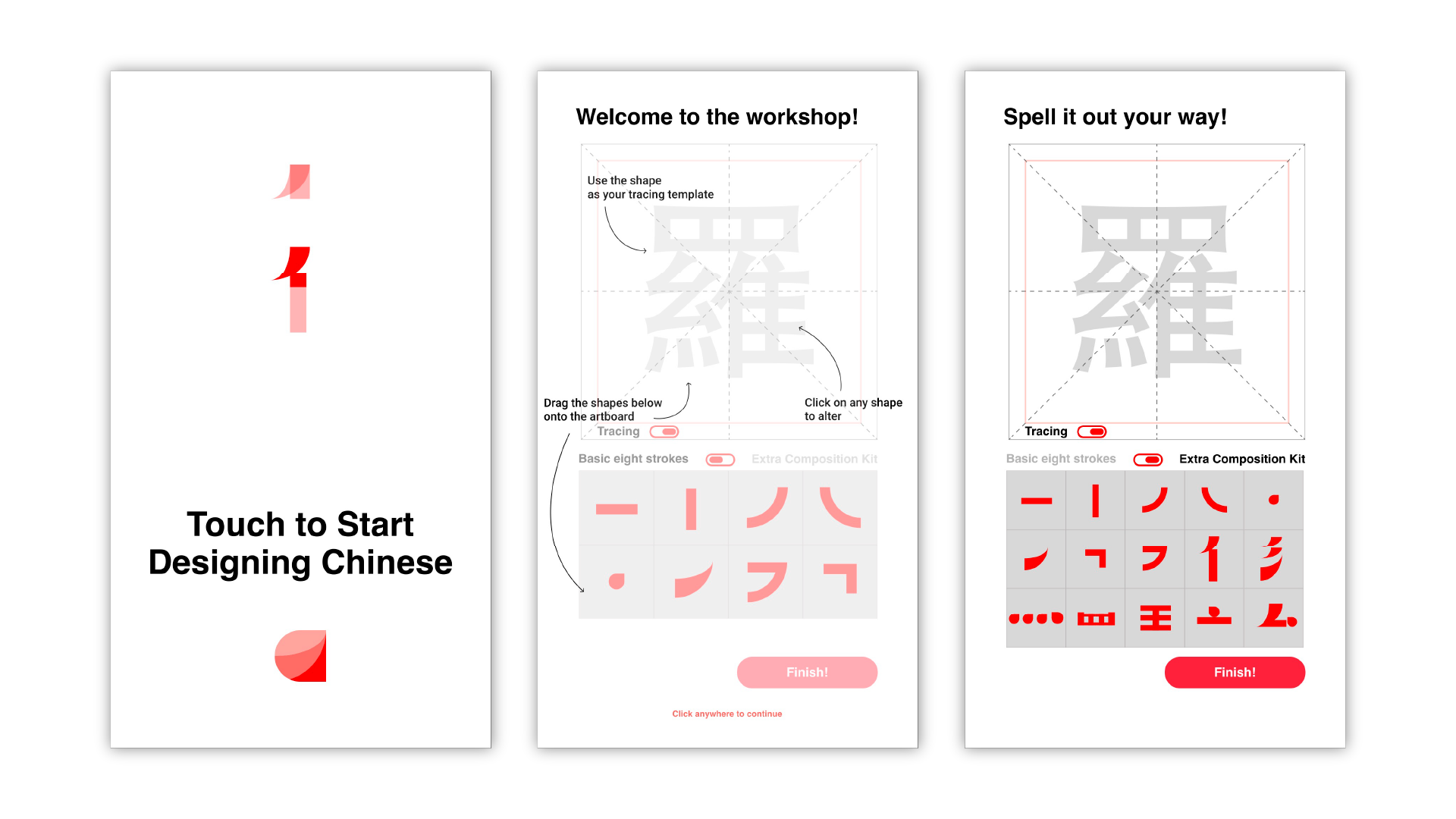
Some promotion posters:
